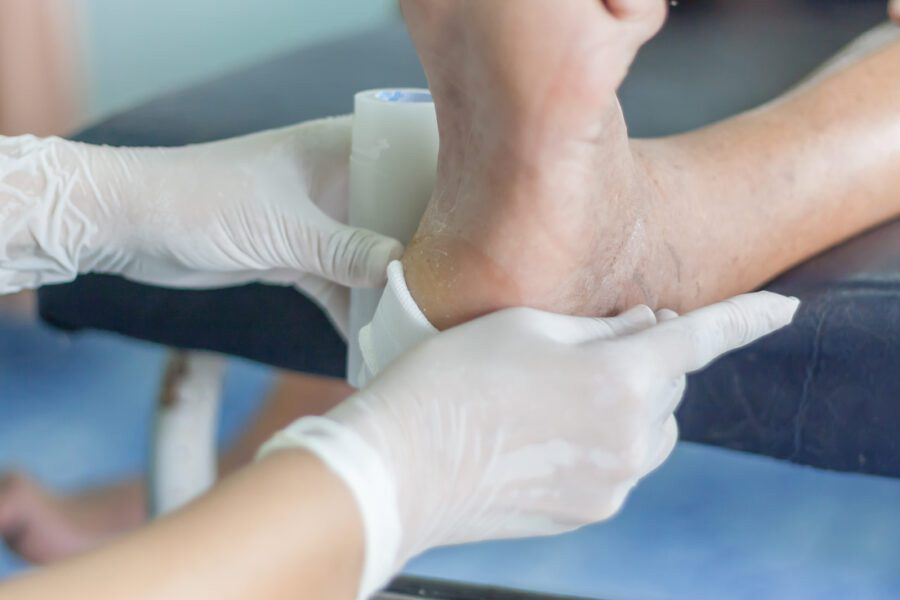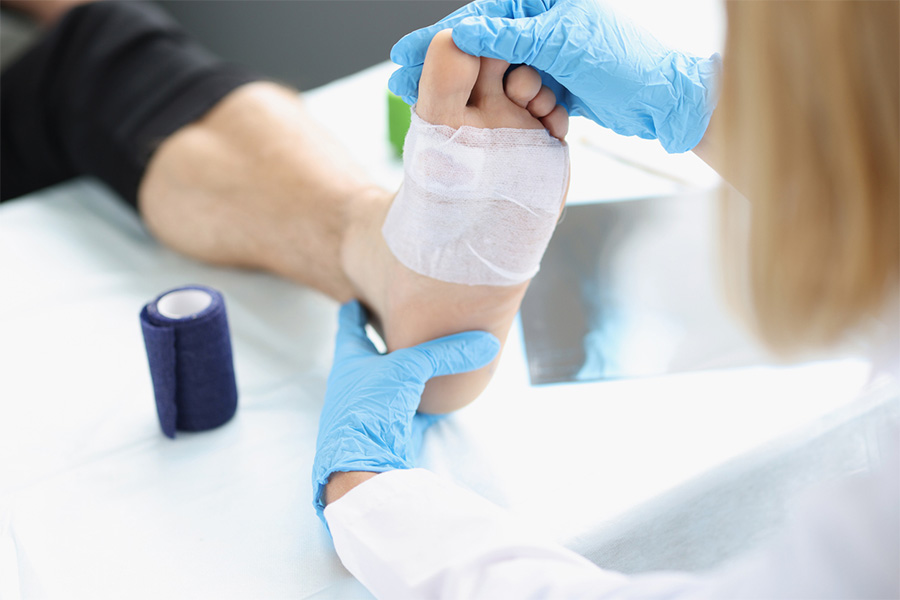If you have diabetes and have started to lose sensation in your feet from diabetic neuropathy, there’s a good chance that you’ll eventually experience a diabetic wound. Diabetic wounds can be challenging to heal, often leading to infection and even amputation. But with proper care, most diabetic wounds can be healed quickly and without complication.
Let’s discuss what causes diabetic wounds, what to do if you experience one, how to prevent them from occurring, and where you can go in Cincinnati to get the best foot and ankle care available.
What Is a Diabetic Wound and What Causes It?
Diabetes primarily affects blood sugar, but the disease has many other complications. High blood sugar can lead to poor circulation and loss of feeling, especially in the extremities. Because diabetes is a chronic illness, diabetics can experience chronically high blood sugar, which can also result in nerve damage. This is known as peripheral neuropathy.
Peripheral neuropathy, poor blood flow to the feet, and the resulting numbness all put diabetics at risk of diabetic wounds in the feet. When diabetics injure their feet or get sores and blisters, they may not notice them right away because they have lost some sensation in their feet. This means that even a mild infection can become worse quickly because it goes unnoticed. Diabetic wounds are often difficult to heal, leading to infection and even amputation in serious cases.
How to Identify a Diabetic Wound?
If you have diabetes, it’s important to be able to identify diabetic wounds so that you can get treatment as quickly as possible. There are a few ways to do this.
The first is to check for any changes in your skin. Skin that is red, hot, or swollen may be infected and require immediate treatment. Another sign of a diabetic wound is drainage from the wound site. If you notice any of these things, see your doctor right away.
How to Prevent Diabetic Wounds from Occurring?
There are a few things you can do to prevent diabetic wounds from occurring in the first place.
One is to keep your blood sugar under control. You should see your doctor or endocrinologist regularly so they can help you find the best way to monitor your blood sugar. Another way to control blood sugar is through your diet; eating a diet that includes lots of fruit and vegetables, whole grains, low-fat dairy, and a moderate amount of meat is essential. Exercising regularly several days a week for at least 30 minutes can help you stay fit and control your blood sugar.
Inspecting your feet regularly for any changes or signs of infection is also important. Remember, look for skin that is hot, red, or swollen. If you see anything that looks concerning, schedule an appointment with your doctor or a podiatrist specializing in diabetic wounds.
Diabetic Wound Care Near Me
If you have diabetes, are concerned about diabetic wounds, or have wounds that are not healing, you should visit Cincinnati Foot and Ankle Care. Our board-certified podiatrists treat all kinds of foot conditions, and some of them specialize in diabetic foot wounds. Our doctors work hard to design custom treatments for our patients that relieve their symptoms and prevent diabetic wounds from arising in the future.
To schedule an appointment with us, call our location nearest you or request an appointment here. We look forward to serving you!
Share

People with diabetes often experience difficulty healing wounds.




